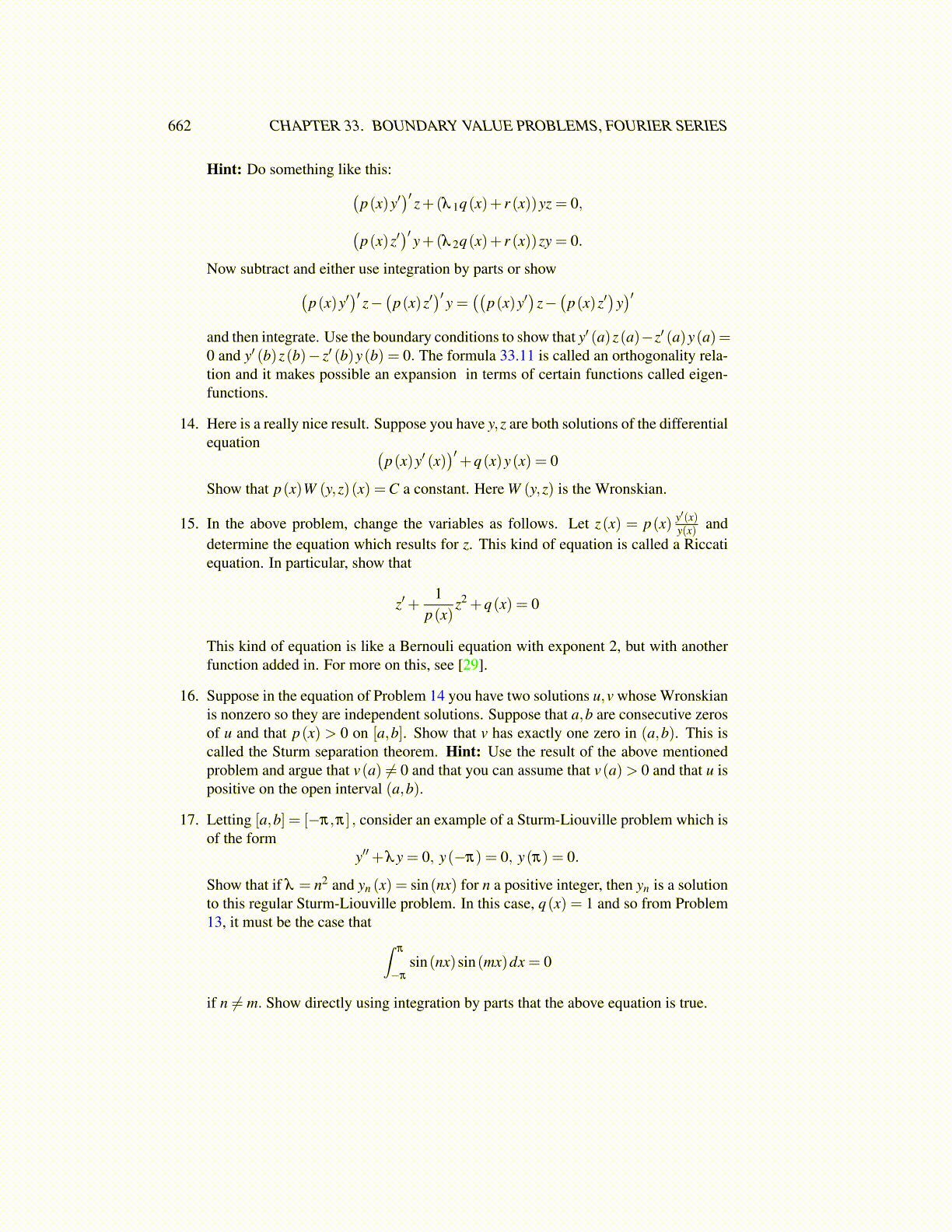
662 CHAPTER 33. BOUNDARY VALUE PROBLEMS, FOURIER SERIES
Hint: Do something like this:(p(x)y′
)′ z+(λ 1q(x)+ r (x))yz = 0,(p(x)z′
)′ y+(λ 2q(x)+ r (x))zy = 0.
Now subtract and either use integration by parts or show(p(x)y′
)′ z− (p(x)z′)′ y = ((p(x)y′
)z−(
p(x)z′)
y)′
and then integrate. Use the boundary conditions to show that y′ (a)z(a)−z′ (a)y(a)=0 and y′ (b)z(b)− z′ (b)y(b) = 0. The formula 33.11 is called an orthogonality rela-tion and it makes possible an expansion in terms of certain functions called eigen-functions.
14. Here is a really nice result. Suppose you have y,z are both solutions of the differentialequation (
p(x)y′ (x))′+q(x)y(x) = 0
Show that p(x)W (y,z)(x) =C a constant. Here W (y,z) is the Wronskian.
15. In the above problem, change the variables as follows. Let z(x) = p(x) y′(x)y(x) and
determine the equation which results for z. This kind of equation is called a Riccatiequation. In particular, show that
z′+1
p(x)z2 +q(x) = 0
This kind of equation is like a Bernouli equation with exponent 2, but with anotherfunction added in. For more on this, see [29].
16. Suppose in the equation of Problem 14 you have two solutions u,v whose Wronskianis nonzero so they are independent solutions. Suppose that a,b are consecutive zerosof u and that p(x) > 0 on [a,b]. Show that v has exactly one zero in (a,b). This iscalled the Sturm separation theorem. Hint: Use the result of the above mentionedproblem and argue that v(a) ̸= 0 and that you can assume that v(a)> 0 and that u ispositive on the open interval (a,b).
17. Letting [a,b] = [−π,π] , consider an example of a Sturm-Liouville problem which isof the form
y′′+λy = 0, y(−π) = 0, y(π) = 0.
Show that if λ = n2 and yn (x) = sin(nx) for n a positive integer, then yn is a solutionto this regular Sturm-Liouville problem. In this case, q(x) = 1 and so from Problem13, it must be the case that ∫
π
−π
sin(nx)sin(mx)dx = 0
if n ̸= m. Show directly using integration by parts that the above equation is true.